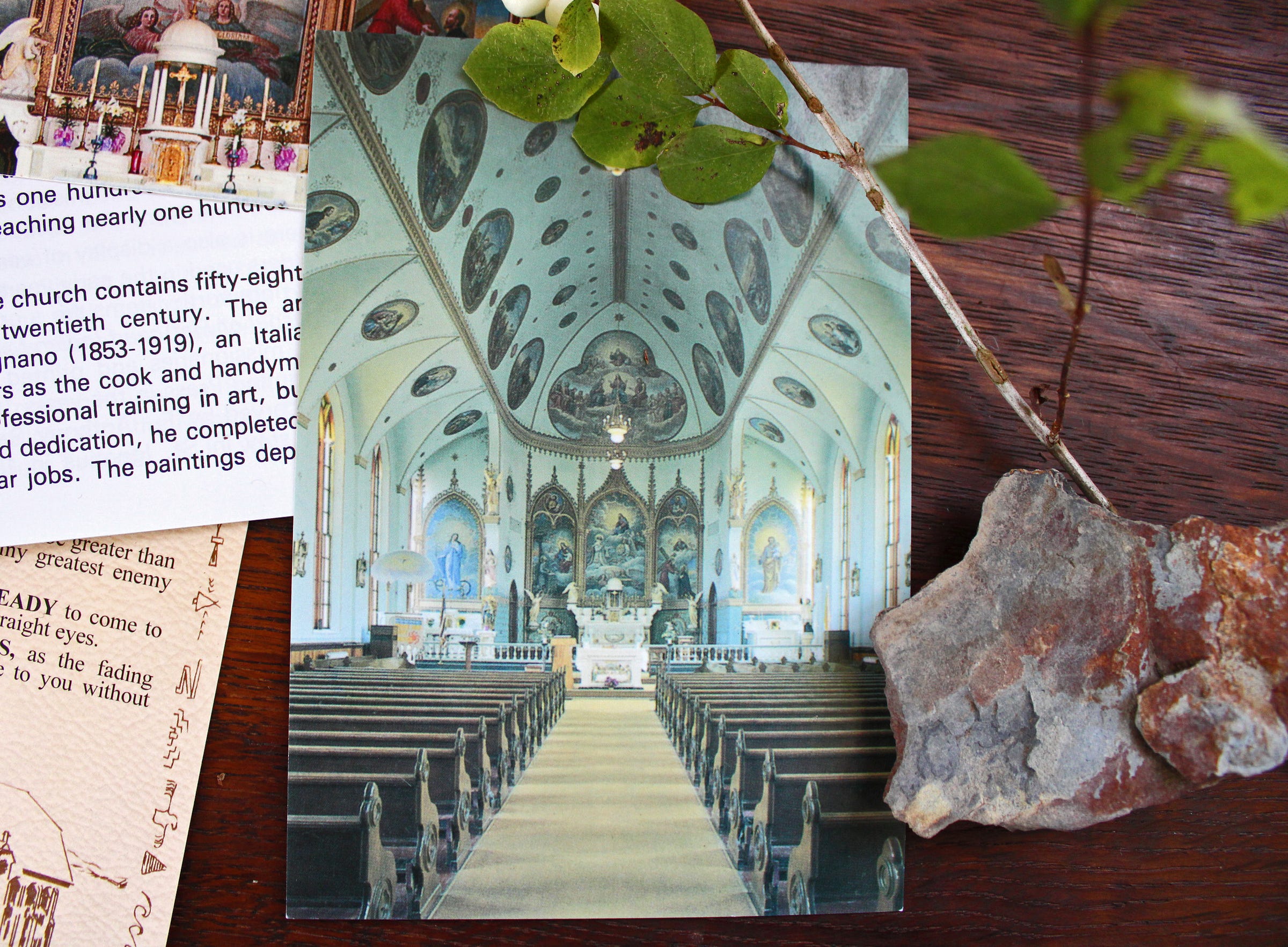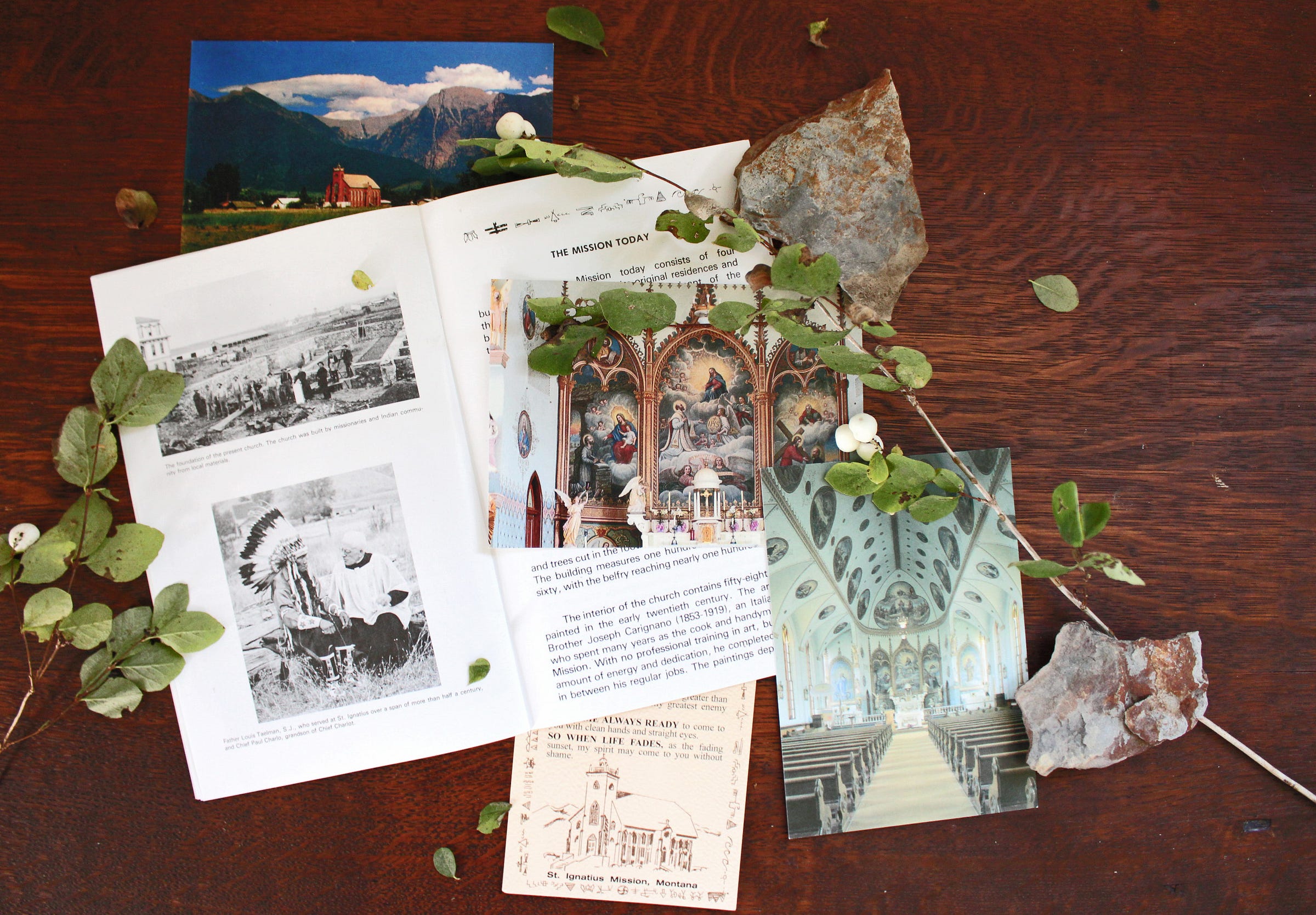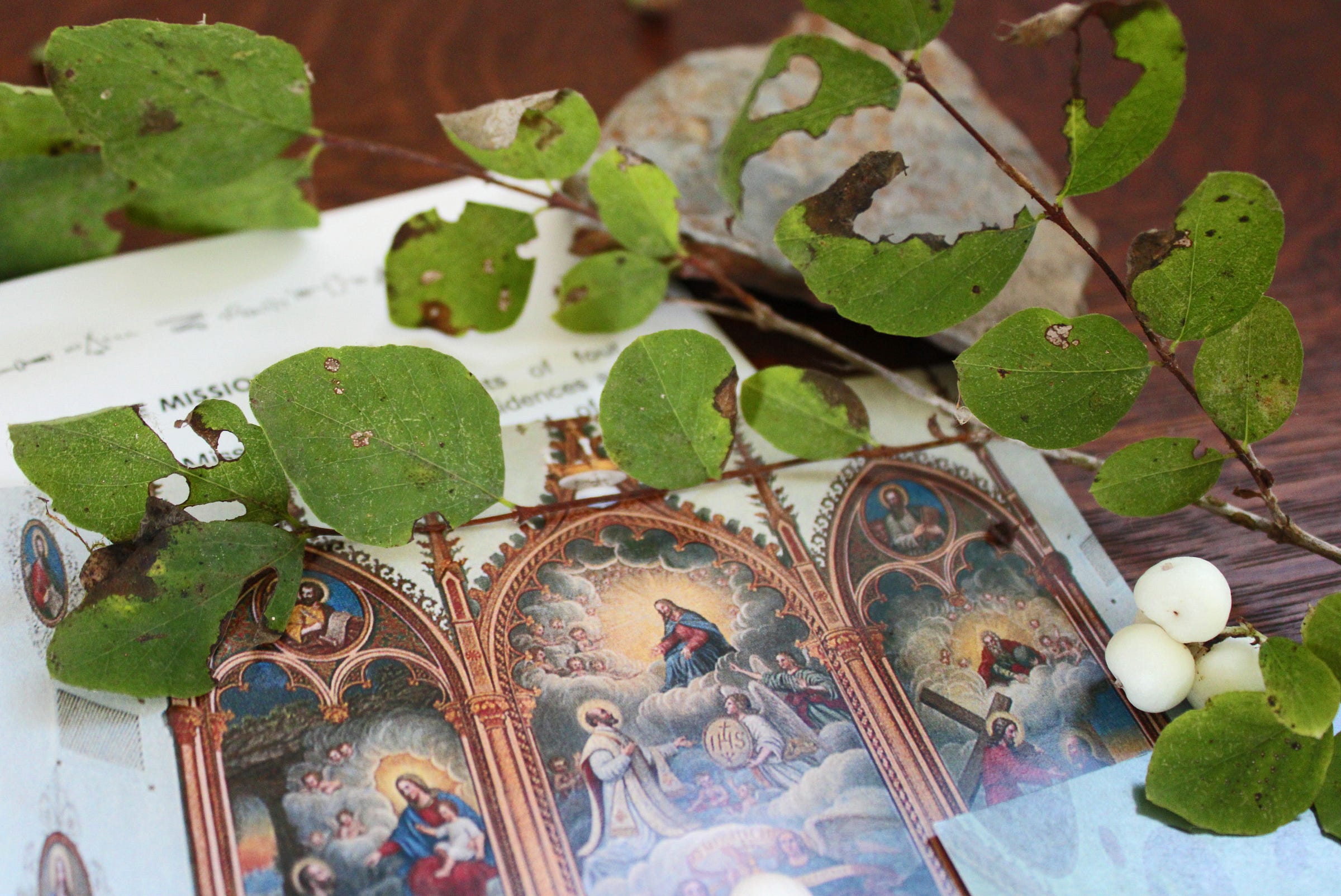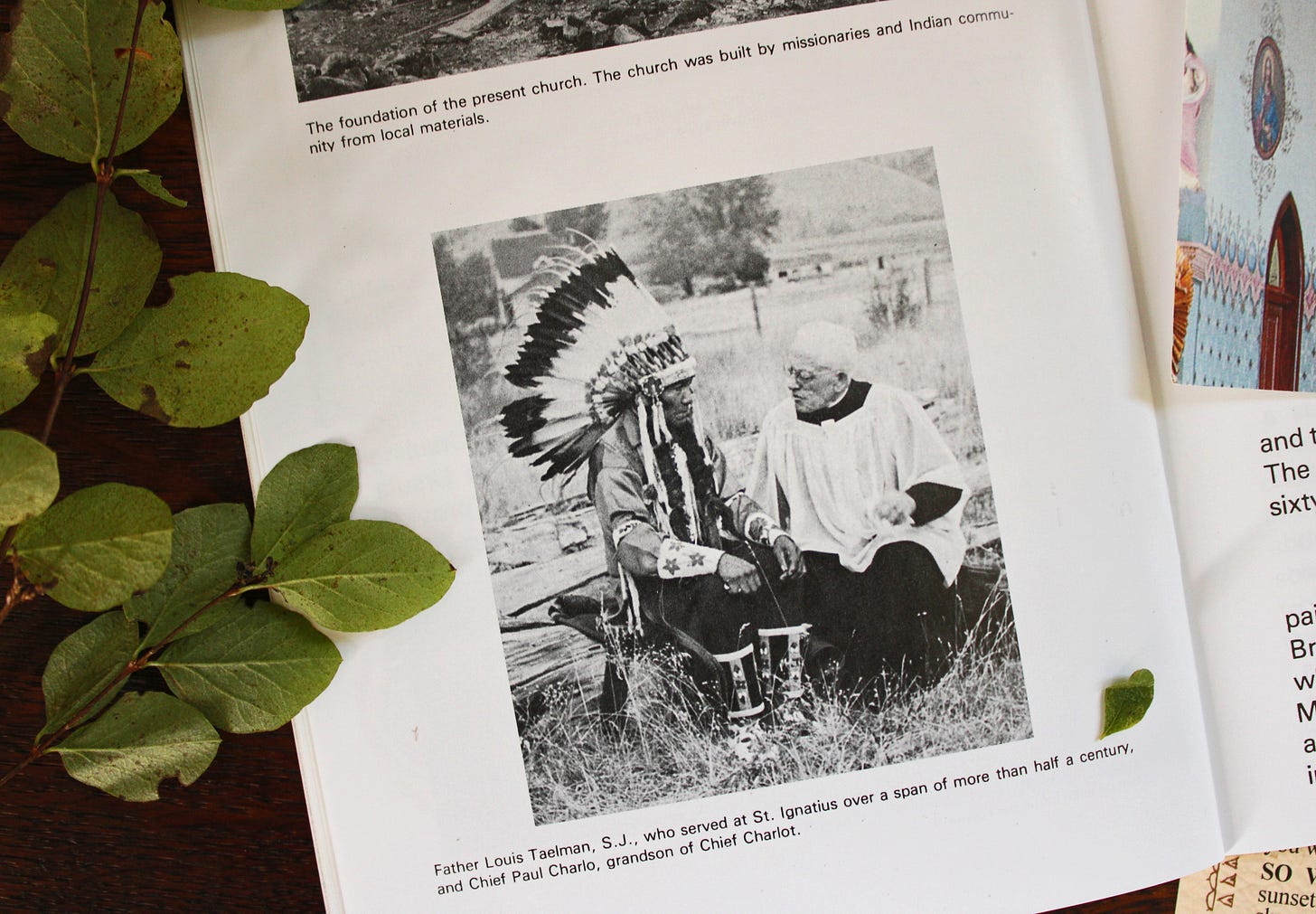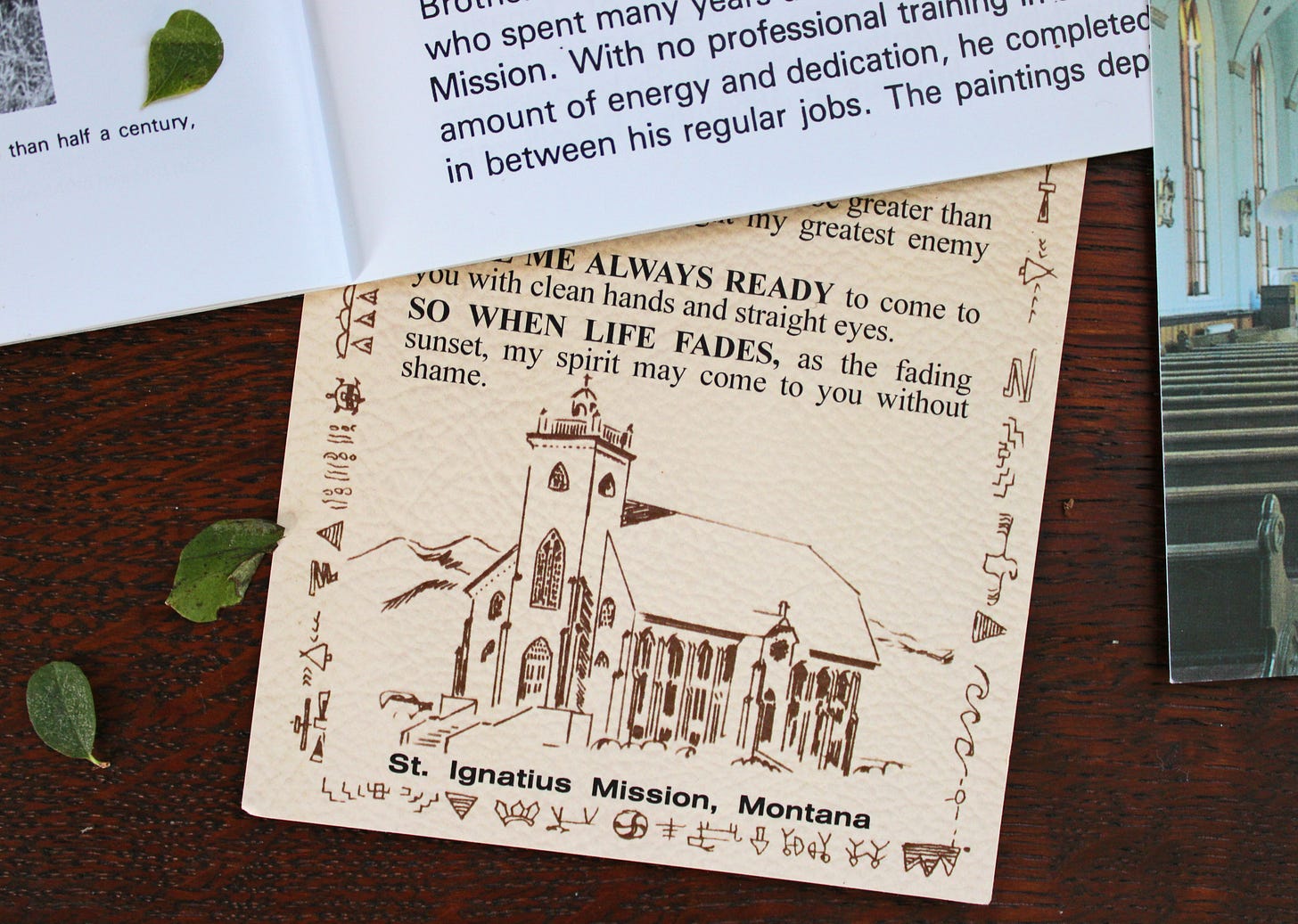"God's House": St. Ignatius Mission
An invitation to chat with the pastor of this historic Mission church!
I’m delighted and honored to get to host the Jesuit pastor of Montana’s historic St. Ignatius Mission - I hope you can join us tomorrow as we learn more about the story of this church, its landscape, the people surrounding it, and those who call it ‘home.’
But first, a bit about the Mission…
This past summer turned into a pilgrimage1 for me: winding in and out of landscapes that were all so beautiful and so different from one another, and finding myself in sacred spaces of worship that have housed the prayers of generations. Churches and chapels, all bound uniquely to their varied landscapes and their cultural contexts.
One of the most impactful pilgrimage sites on my journey was the historic Saint Ignatius Mission of St. Ignatius, MT - a sublime treasure tucked into the northwest corner of my home state, on the Flathead Reservation and surrounded by the Mission Mountains and National Bison Range.
The Mission itself is a whole ecosystem: founded by Jesuit missionaries, it holds their original 1854 log church & home, the 1864 residence of the Providence Sisters, the 1891 church - built of local clay and trees - and the 1960 rectory. It provided a flour mill, printing press, saw mill, hospital, and more.
When we arrived at the church2 and walked through the front door, I felt like I had the wind knocked out of me: there, nestled into the quiet Mission Valley and housed in a humble brick exterior, was an absolutely indescribable work of art covering the whole interior…all painted by the Mission’s cook in the early 20th century.
The interior of the church contains fifty-eight murals painted over a fourteen-month period in 1904-1905. The artist was a Jesuit Brother who served as the Mission cook. Brother Carignano, SJ, (1853-1919), with no professional training in art, completed the paintings between his regular duties as the Mission cook and handyman. The paintings depict scenes from Hebrew Scriptures, the New Testament, and the lives of the saints. The triptych behind the main altar show the three visions of St. Ignatius of Loyola for whom the Mission (and town) are named.
Every fresco told a story, and I found myself slowly moving from image to image, curious to see which familiar friend I would be encountering next…from St. Teresa to St. Ursula, the St. Ignatius church surrounds us with the beautiful camaraderie inherent in our faith heritage. It was like looking at a family tree, delighting at familiar faces and intrigued by the ancestors whose stories have been unfamiliar…and, just as I feel when looking at my own personal family tree, I felt tied to these people and inspired to make those unfamiliar faces feel more present and known.
Perhaps more striking, I found - amidst all those frescoed Saints - the unknown saints who were born to this landscape, and those who worshipped at St. Ignatius: the people who called this space their home…K̓ʷl̓ncutn Citxʷ: Salish for God’s House.
The role that Native American tribes had in the life of the Mission has been profoundly complex to learn about. The local Salish people had encountered Catholicism through the Iroquois, eventually sending delegations east to bring “Black Robes” back west; Father Peter DeSmet was one of the Jesuit missionaries who responded, and he was generally welcomed as an advocate and an intermediary in his journeys. The Salish helped to move the original mission site to its present location, and Mission valley became a settlement space spanning tribes. With the ensuing governmental acts and treaties in this period, though, countless Indigenous peoples ultimately found themselves uprooted and separated from their ancestral land. I won’t pretend to be able to hold a candle to the immensely complicated history of this region and these people, but suffice it to say: I’m keeping my eyes and ears open, learning, considering, and asking questions.
Today, the St. Ignatius Mission - among the Bitterroot Salish, Pend d’Oreille & Kootenai peoples - is a remarkable graft of Jesuit tradition and local Indigenous cultures, celebrating Mass both in the church and at the local Powwow grounds, supporting traditional dance, song, meals, language, and more.
So, I’m delighted to have the opportunity to chat alongside you with Fr. Victor Cancino, SJ - the pastor who is currently tending this beautiful community at the St. Ignatius Mission!
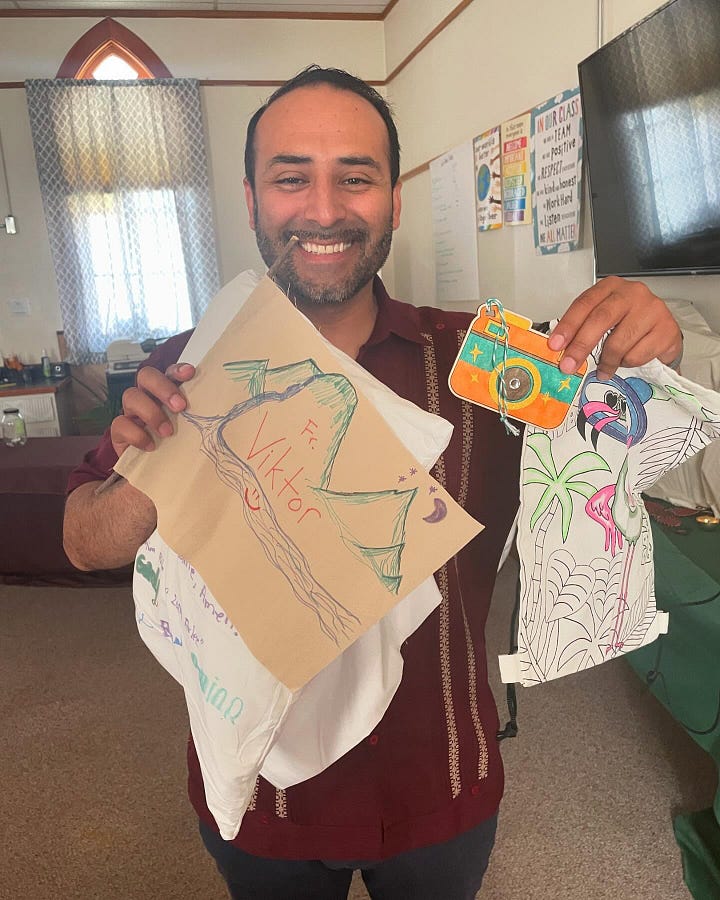
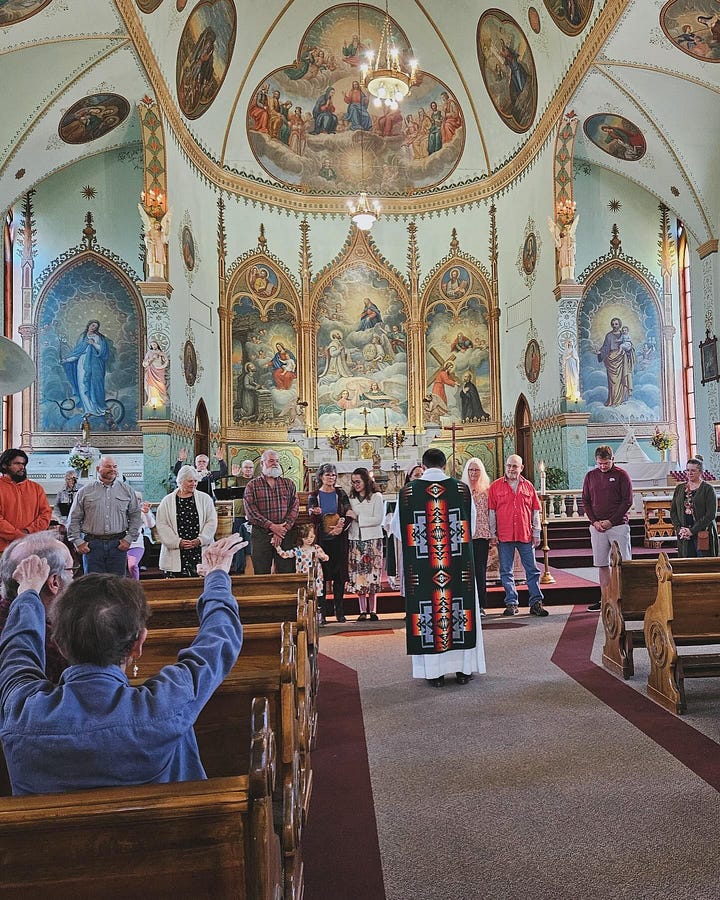
Victor Cancino, SJ, studied at the Pontifical Biblical Institute in Rome. He lives on the Flathead Indian Reservation in Montana where he serves as pastor to the local communities. He first met the Jesuits at Loyola Marymount University in Los Angeles, California. The rest is history. It was at LMU where he fell in love with scripture and Ignatian Spirituality fostered by the many Jesuits who dedicated their life to study, scholarship, and to an ever-expansive vision of God. His favorite communities he has lived in since entering the Society include, San Salvador, North St. Louis, Brighton, Massachusetts, Xiamen, China, Boyle Heights in Los Angeles, Rome, Italy, and Hollywood. Of course, his most favorite place is where he lives now in St. Ignatius, MT, on the Rez among the Salish, Kootenai, and non-native Montanans. If you visit him, please bring as your peace offering a vinyl of your choice to add to his ever-expansive record collection.



